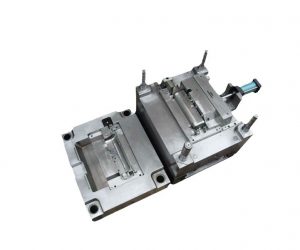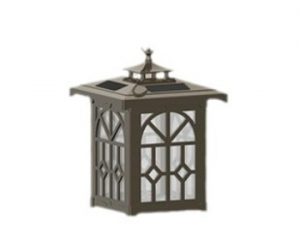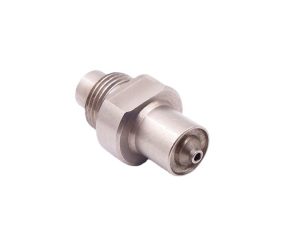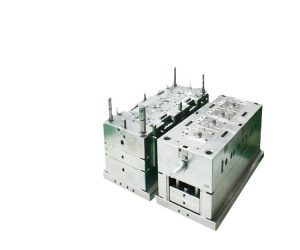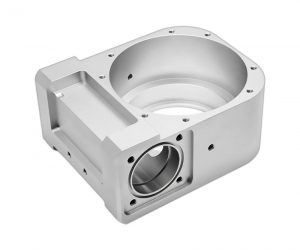Creating things from plastic involves a method where metal molds shape and cut the material. This technique is super common in fields like making phones, cars, gadgets, and even kitchen appliances. With these molds, you can make all sorts of things—plates, thin films, tubes, sticks, seals, and spacers to name a few.
The plastic mold making process usually includes the following steps: First, the designer will design the corresponding mold drawings according to the needs of the product. Then, select the appropriate metal material to make the mold according to the drawings. Next, the plastic material is heated to a molten state and poured into the mold. Finally, after waiting for the plastic to cool and solidify, the formed product can be removed from the mold.
Plastic molds have many advantages. First, it can quickly and efficiently produce large quantities of products of the same shape and size. Secondly, plastic molds can produce very fine and complex products to meet the needs of different industries. In addition, plastic molds can be reused multiple times, thus reducing production costs.
What is Plastic Die?
Plastic die is a general term that refers to the use of metal dies to shape and cut plastic materials. A die is a metal restrictor or channel that can provide a constant cross-sectional profile to a stream of liquid or solid plastic. Dies can have various shapes and sizes, depending on the desired product and process.
There are two main types of plastic die processes: die forming and die cutting. Die forming involves extruding molten plastic through a die to create a continuous shape, such as a sheet, film, pipe or rod. Die cutting involves pressing a flat plastic sheet against a die to create a discrete shape, such as a gasket, spacer or flat shape.
Types of Plastic Die Processes
Die Forming
Die forming is a process that involves extruding molten plastic through a die to create a continuous shape. The plastic material is heated and melted in an extruder, then pushed through the die under pressure. The die has three distinct regions: manifold, approach and lip. The manifold serves to channel the plastic melt from the extruder to a near-net-shape of the final product. The approach region further guides the melt into the final shape and corrects for any non-uniform flow. The lip forms the melt into the final desired cross-section and compensates for any remaining flow asymmetry.
After exiting the lip of the die, the plastic melt undergoes die swell, which is an expansion of the melt as the pressure is released. Die swell depends on the plastic chemistry and the die design. After die swell, the plastic shape is cooled and cured, either by air cooling or by pulling through a set of cooling rolls (also known as calender or chill rolls). The cooling rolls also help determine the thickness and surface texture of the product. The final product is then drawn onto a take-up roller or cut into transportable lengths.
Die forming can produce various shapes and products, such as sheets, films, pipes, rods and other more complex profiles. Some examples of die forming processes are:
- Sheet/film extrusion: This process produces flat or thin products, such as plastic sheets or films. There are two major types of dies used for sheet/film extrusion: T-shaped and coat-hanger. A T-shaped die consists of two arms extending at right angles from the extrusion channel; these arms have a small slit along their length to allow the plastic melt to flow through. A coat-hanger die differs from the T-shaped die in that the arms are at a shallower angle and are often curved; the arms also have a variable diameter, tapering down to a smaller radius further from the extrusion channel. The coat-hanger die reduces the flow non-uniformity across the width of the extruded sheet or film.
- Pipe/rod extrusion: This process produces cylindrical products, such as plastic pipes or rods. The die used for pipe/rod extrusion has a circular cross-section with an opening in the center; this opening determines the diameter of the product. The pipe/rod extrusion process can also produce hollow products by using a mandrel inside the die opening; this mandrel determines the inner diameter of the product.
- Profile extrusion: This process produces products with complex cross-sections, such as window frames, door frames, siding panels or decorative moldings. The die used for profile extrusion has a cross-section that matches the desired shape of the product; this cross-section can have multiple curves, angles and contours. The profile extrusion process can also produce co-extruded products by using multiple extruders and dies; this allows for different colors or materials to be combined in one product.
Die Cutting
Die cutting is a process that involves pressing a flat plastic sheet against a die to create a discrete shape. The plastic sheet can be either solid or laminated with another material or adhesive. The die can be either flat or rotary; a flat die is a metal plate with a cutting edge in the shape of the desired product, while a rotary die is a metal cylinder with a cutting edge on its surface. The die cutting process can be either kiss cutting or through cutting; kiss cutting involves cutting only the top layer of the plastic sheet, while through cutting involves cutting all the way through the plastic sheet.
Die cutting can produce various shapes and products, such as gaskets, spacers, flat shapes and more. Some examples of die cutting processes are:
- Flatbed die cutting: This process uses a flat die and a flatbed press to cut the plastic sheet. The plastic sheet is placed on the flatbed press, then the die is lowered onto the sheet with enough pressure to cut the desired shape. The die is then lifted and the cut shape is removed from the sheet. Flatbed die cutting can produce precise and intricate shapes, but it is relatively slow and requires frequent die changes.
- Rotary die cutting: This process uses a rotary die and a rotary press to cut the plastic sheet. The plastic sheet is fed into the rotary press, then the rotary die rotates against the sheet with enough pressure to cut the desired shape. The cut shape is then separated from the sheet by a stripper or an air blast. Rotary die cutting can produce fast and continuous shapes, but it is limited by the size and complexity of the rotary die.
- Laser die cutting: This process uses a laser beam to cut the plastic sheet. The laser beam is guided by a computer-controlled system that follows a digital design of the desired shape. The laser beam melts or vaporizes the plastic material along the cutting path, creating a clean and precise cut. Laser die cutting can produce complex and intricate shapes, but it is relatively expensive and requires high energy consumption.
Benefits of Plastic Die
Plastic die offers several benefits for various industries and applications, such as:
- Versatility: Plastic die can produce various shapes and products from different plastic materials, such as styrene, formex, mylar, polypropylene, polyester, foam board, polyethylene, HDPE, teflon, LPDE, high impact polystyrene, PETG, ABS, UHMW, ultem, valox, kydex, lexan, polycarbonate and vinyl. Plastic die can also combine different colors or materials in one product by using co-extrusion or lamination techniques.
- Efficiency: Plastic die can produce high-quality products with consistent dimensions and properties. Plastic die can also reduce material waste by using off cuts or scrap materials for further processing. Plastic die can also lower overall manufacturing costs by eliminating rework and scrap costs, reducing machinery and maintenance costs, saving die re-ruling costs and providing ready-to-use components.
- Productivity: Plastic die can produce fast and continuous products with minimal downtime or interruption. Plastic die can also handle large production orders without causing bottlenecks or delays.
Applications of Plastic Die
Plastic die is a process of shaping plastic materials into desired forms by using a mold or a die. Plastic die has many applications in various industries, such as automotive, aerospace, medical, packaging, and consumer products. Some of the advantages of plastic die are:
- It can produce complex and intricate shapes with high precision and accuracy.
- It can reduce material waste and production costs by using less raw material and energy.
- It can enhance the mechanical and physical properties of plastic products by improving their strength, durability, and resistance to corrosion and wear.
- It can create aesthetically pleasing and functional products with different colors, textures, and finishes.
Some of the common types of plastic die are:
- Injection molding: This is a process of injecting molten plastic into a mold cavity under high pressure and then cooling it to form a solid product. Injection molding is widely used for mass production of plastic parts with uniform shapes and sizes.
- Extrusion: This is a process of forcing heated plastic through a die with a specific cross-section to form a continuous product with a fixed shape. Extrusion is commonly used for making plastic pipes, tubes, rods, sheets, films, and profiles.
- Blow molding: This is a process of inflating a hollow plastic tube or parison into a mold cavity by using air pressure to form a hollow product. Blow molding is mainly used for making plastic bottles, containers, and other hollow products.
- Thermoforming: This is a process of heating a plastic sheet or film until it becomes soft and then shaping it over a mold or a vacuum by using air pressure or mechanical force to form a product. Thermoforming is often used for making plastic trays, cups, lids, clamshells, and other packaging products.
Materials Used for Plastic Die
Plastic die is a process of shaping plastic materials into desired forms by applying heat and pressure. Plastic die can be used for various applications, such as packaging, toys, medical devices, automotive parts, and more. The choice of materials for plastic die depends on several factors, such as the properties of the plastic, the design of the product, the cost of production, and the environmental impact.
Some of the most common materials used for plastic die are:
- Polyethylene (PE): This is a thermoplastic polymer that has high resistance to chemicals, moisture, and impact. PE can be classified into low-density polyethylene (LDPE), high-density polyethylene (HDPE), and linear low-density polyethylene (LLDPE). PE is widely used for plastic die because it is easy to process, recyclable, and inexpensive.
- Polypropylene (PP): This is another thermoplastic polymer that has high resistance to heat, chemicals, and fatigue. PP can be classified into homopolymer polypropylene (HPP), random copolymer polypropylene (RCP), and impact copolymer polypropylene (ICP). PP is also widely used for plastic die because it has good mechanical properties, low density, and low cost.
- Polyvinyl chloride (PVC): This is a thermoplastic polymer that has high resistance to fire, corrosion, and abrasion. PVC can be classified into rigid PVC (RPVC) and flexible PVC (FPVC). PVC is used for plastic die because it has good dimensional stability, electrical insulation, and versatility. However, PVC also has some drawbacks, such as environmental concerns, toxicity, and brittleness.
- Polystyrene (PS): This is a thermoplastic polymer that has high resistance to water, acids, and alkalis. PS can be classified into general-purpose polystyrene (GPPS), high-impact polystyrene (HIPS), and expandable polystyrene (EPS). PS is used for plastic die because it has good clarity, rigidity, and low cost. However, PS also has some drawbacks, such as low thermal stability, poor impact strength, and low recyclability.
- Acrylonitrile butadiene styrene (ABS): This is a thermoplastic polymer that has high resistance to impact, heat, and chemicals. ABS is a copolymer of acrylonitrile, butadiene, and styrene. ABS is used for plastic die because it has good toughness, strength, and gloss. However, ABS also has some drawbacks, such as high cost, flammability, and poor weatherability.
